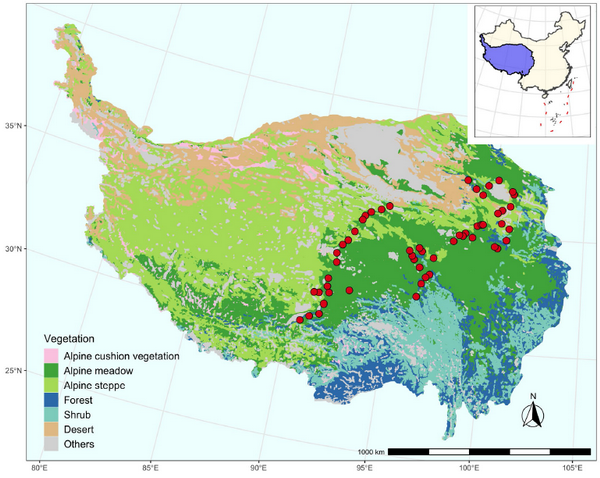Most existing studies that examined the biotic mechanisms of ecosystem stability have focused on aboveground biodiversity. Whether and how belowground biodiversity affects the stability of natural ecosystems is largely unknown. In the present study, we investigated the relationships between above-and
Belowground biodiversity and the temporal stability of grassland biomass production across a largegradient of soil and climatic conditions.
We coupled a field biodiversity survey conducted in 54 alpine grassland ecosystems across the Tibetan Plateau with a satellite-sensed proxy (enhanced vegetation index, EVI) of ecosystem productivity during 2001–2016.The temporal stability of primary productivity was calculated as the ratio of the mean annual peak EVI to the standard deviation of the annual peak EVI over this period. Plant diversity was determined using a classic vegetation survey approach, soil bacterial and AM fungal diversity were measured using a high-throughput sequencing approach, and soil fauna was counted and identified at the order level after being extracted using a modified Berlese–Tullgren method.
Our results demonstrated that both above-and belowground biodiversity were positively associated with ecosystem stability. Belowground biodiversity not only affected ecosystem stability directly, but also influenced it indirectly through plant diversity and soil fertility. Furthermore, soil pH, climate and its variability strongly influenced soil biodiversity, which in turn influenced ecosystem stability.

FIGURE Locations of the sampling sites across the Tibetan Plateau, shown on the background of China's vegetation atlas (Chinese Academy of Sciences, 2001
This result was published in Global Ecology and Biogeograhy with the title of “Above- and belowground biodiversity jointly drive ecosystem stability in natural alpine grasslands on the Tibetan Plateau”.
The link below will guide you to the reading:
